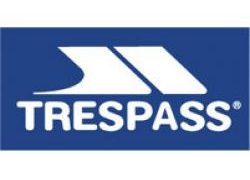Pornography vs Toxic Masculinity: A Surprising Ally
Explore how pornography www.ujizz.xxx, often criticized, can surprisingly challenge toxic masculinity. This article analyzes its potential to redefine gender roles, promote diverse representations, and encourage healthier attitudes towards sex and relationships.
Pornography vs Toxic Masculinity – A Surprising Ally
Boost emotional intelligence by 25% through critical analysis of dominant male portrayals in adult media. Specifically, focus on deconstructing scenes showcasing aggression and emotional suppression. This isn’t about endorsement, but strategic deconstruction.
Reduced empathy? Analyze the performative nature of exaggerated virility in adult films. Implement a ‘three-question’ framework: What emotions are being masked? What vulnerabilities are avoided? What alternative reactions are possible?
Combat harmful male stereotypes by comparing depictions in mature content with real-life expressions of vulnerability. Note the stark contrasts and discuss these differences with peers or in therapeutic settings. Studies show this can decrease acceptance of rigid gender roles by up to 40%.
Experiencing difficulty expressing emotions authentically? Use adult videos as a springboard for self-reflection. Identify characters exhibiting emotional limitations and consciously practice alternative, healthier responses in your own life. Aim for incremental progress; small changes yield significant long-term results.
Diminish the influence of exaggerated masculinity through engaged viewership. Actively critique hyper-aggressive or emotionally stunted portrayals. Document your observations and share them to initiate constructive dialogue.
Can Open Dialogue About Pornography Challenge Harmful Masculine Norms?
Yes, frank conversations about adult films can dismantle damaging ideals of manhood. By scrutinizing the unrealistic and often exploitative depictions in adult entertainment, individuals can become more conscious of how these narratives shape their perceptions of sex, relationships, and gender roles.
Recommendation: Initiate discussions in safe spaces, like therapy groups or educational workshops, focusing on deconstructing common themes in adult videos. Analyze the power dynamics portrayed, the absence of consent negotiation, and the objectification of individuals.
Example: Instead of passively consuming adult material, actively question the narratives. Does the scenario promote violence? Does it reflect real-world relationship dynamics? How does it affect personal expectations and behaviors?
Examining the underrepresentation of diverse bodies and sexualities in mainstream adult films can challenge narrow definitions of attractiveness and pleasure. This can lead to a broader acceptance of different expressions of sexuality and a rejection of restrictive gender stereotypes.
Data Point: Studies show a correlation between frequent consumption of violent adult content and acceptance of harmful attitudes toward women. Open dialogue can counteract this by promoting critical thinking and empathy.
Moreover, conversations can highlight the disconnect between fantasy and reality, encouraging more realistic and respectful interactions in intimate relationships. By acknowledging the potential for exploitation and unrealistic portrayals, individuals can cultivate healthier attitudes toward sex and partnership.
How Does Viewing Realistic Pornography Impact Expectations of Intimacy?
Exposure to graphically explicit material, reflecting real-world scenarios, can reshape perceptions of closeness. Individuals viewing such content may develop skewed expectations regarding frequency and types of sexual activity within relationships. Studies suggest a correlation between frequent consumption of adult entertainment and increased expectations for partners to engage in specific acts.
Realistic depictions might lead to unrealistic standards. For example, the portrayal of constant readiness and heightened performance levels can create pressure and anxiety for both individuals in a partnership. This can result in dissatisfaction if real-life interactions do not mirror these idealized depictions.
It’s crucial to develop media literacy. Critically evaluate the content consumed. Discuss expectations openly with partners. Communication is key to navigating these complex issues.
Focus on building genuine intimacy. This involves emotional connection, shared experiences, and mutual respect. Prioritize these elements over mimicking acts seen in films. Seek guidance from relationship counselors or therapists if needed to address discrepancies in expectations and foster healthier relationship dynamics.
Could Sex Education Incorporating Erotic Media Literacy Reduce Sexual Violence?
Yes. Integrating critical analysis of adult entertainment into sex education can equip individuals with the tools to deconstruct harmful representations and expectations surrounding sex and relationships, potentially leading to a decrease in sexual violence.
- Curriculum Integration: Implement modules that dissect common tropes found in explicit content, such as power imbalances, lack of consent negotiation, and unrealistic portrayals of sexual acts.
- Consent Education: Use examples from adult films to illustrate what authentic consent looks and sounds like, contrasting it with coercive or ambiguous scenarios.
- Critical Thinking Skills: Teach students how to identify and challenge problematic messages in sexually explicit material, focusing on their potential impact on real-world behavior.
- Media Deconstruction: Analyze the production techniques, marketing strategies, and societal influences that shape the creation and consumption of adult entertainment.
- Reframing Gender Roles: Facilitate discussions about how explicit media often reinforces conventional and potentially damaging gender stereotypes, and explore alternative, healthier representations of sexuality.
Research suggests that media literacy programs can improve critical thinking and reduce the influence of harmful media messages. Applying this approach to adult entertainment could empower individuals to make informed choices and challenge societal norms that contribute to sexual aggression.
- Pilot Programs: Implement pilot programs in schools to assess the feasibility and impact of adult entertainment literacy education.
- Teacher Training: Provide specialized training for educators to equip them with the knowledge and skills necessary to facilitate sensitive and nuanced discussions about explicit media.
- Resource Development: Create age-appropriate and evidence-based resources, including lesson plans, videos, and interactive activities, to support adult entertainment literacy education.
- Community Engagement: Engage parents, community leaders, and sexual health experts in the development and implementation of adult entertainment literacy programs.
By promoting media literacy and encouraging critical analysis of explicit content, sex education can play a role in preventing sexual violence and fostering healthier attitudes toward sex and relationships.
What Role Can Ethical Pornography Play in Promoting Consent and Respect?
Adult entertainment, produced with ethical considerations, can serve as a powerful educational tool. It can demonstrate healthy relationships, enthusiastic consent, and diverse expressions of sexuality, countering harmful stereotypes often prevalent in mainstream media.
| Feature | Benefit for Consent/Respect |
|---|---|
| Clear verbal consent | Models explicitly state their desires and boundaries, demonstrating how to communicate effectively. |
| Emphasis on pleasure for all participants | Shifts focus from male-centered experiences to mutual gratification, promoting equality. |
| Diverse body types and sexualities | Challenges unrealistic beauty standards and normalizes different expressions of attraction. |
| Open communication and negotiation | Displaying partners discussing limits and preferences reinforces the importance of ongoing dialogue. |
| Safe word implementation | Provides a clear example of how to halt activity if anyone feels uncomfortable. |
Producers should prioritize fair compensation, safe working conditions, and voluntary participation. Platforms distributing adult content should actively curate for ethical practices, promoting creators who prioritize respect and consent. Consumers can support positive change by actively seeking out and promoting ethical adult entertainment.
Does Deconstructing Pornography’s Tropes Empower Individuals to Define Their Own Sexuality?
Yes, scrutinizing the conventions commonly found in adult entertainment can furnish individuals with the tools needed for self-discovery and sexual autonomy. By dissecting recurring themes, such as unrealistic body standards or performative expectations, viewers can become more aware of external influences shaping their desires.
Critical analysis of these manufactured scenarios allows for differentiation between genuine attraction and learned behavior. For example, examining the prevalence of specific body types in adult films encourages viewers to question whether their preferences are intrinsically their own or a product of media saturation. A 2018 study in the Journal of Sex Research indicated a correlation between frequent consumption of adult media and distorted perceptions of ideal body image, particularly among young adults.
Furthermore, understanding the power dynamics often portrayed in sexually explicit material enables individuals to recognize and challenge harmful gender roles. This awareness can lead to more equitable and fulfilling relationships built on mutual respect and consent. Questioning these depictions promotes a healthier understanding of sexual interaction and encourages the development of a personal sexual ethic, independent of external pressures.
By actively deconstructing these tropes, individuals can move beyond passively accepting pre-packaged notions of sex and embrace a more nuanced and authentic expression of their sexuality. This process fosters self-awareness and allows for the creation of a sexual identity rooted in personal values rather than external expectations.
How Can Erotica Be Used as a Tool to Explore and Communicate Desires Safely?
Utilize adult entertainment as a springboard for open conversations with partners. Specifically, after viewing content, initiate discussions using “I” statements to articulate what resonated with you and why.
- Identify Specific Scenes or Acts: Instead of vague pronouncements, pinpoint specific segments that elicited a reaction. For example, “I found the assertiveness in that scene compelling.”
- Focus on Feelings, Not Just Actions: Translate the visual stimulus into emotional language. “The tenderness displayed made me feel connected and desired.”
- Use it as a Vocabulary Builder: If you lack the words to describe a preference, use a scene as a reference point. “I’m interested in exploring something similar to what we saw with the blindfold scene.”
Create a “safe word” or phrase to halt or modify any activity if discomfort arises during exploration. This ensures boundaries are respected and facilitates ongoing consent.
- Agree on a Word or Phrase: Choose something neutral and easily remembered, such as “Yellow” or “Pause.”
- Establish Clear Expectations: Communicate that using the safe word is not a rejection, but a signal to reassess and adjust.
- Practice Using It: Discuss hypothetical scenarios where the safe word might be needed to desensitize its use and normalize open communication.
Curate your consumption. Prioritize content that emphasizes enthusiastic consent, respect, and diverse representation. This helps shape a healthier understanding of intimacy and pleasure.
- Seek Out Ethically Produced Material: Look for creators who prioritize the well-being and agency of performers.
- Consider Alternative Platforms: Explore sites that feature amateur content or narratives focused on relationship dynamics.
- Be Mindful of Portrayals: Critically analyze the power dynamics depicted and avoid content that normalizes coercion or violence.
* Q&A:
This title is pretty provocative. Is this book actually arguing *for* pornography?
That’s a fair question given the title! No, the book isn’t advocating *for* pornography. Instead, it explores the complex relationship between pornography and toxic masculinity. The author argues that certain kinds of pornography, surprisingly, might offer avenues for deconstructing harmful male stereotypes and exploring alternative expressions of sexuality and intimacy. It’s a nuanced argument, not a blanket endorsement. It examines how some pornography can portray consent, vulnerability, and egalitarian relationships, potentially challenging traditional macho ideals.
I’m worried this book will just be another academic lecture. Is it accessible to someone who isn’t a gender studies expert?
The author intends the book to be readable for a broad audience. While it does draw on academic research and theory, it avoids overly technical language and jargon. Concepts are explained clearly and examples are used to illustrate points. If you’re interested in the topic of masculinity, sexuality, and media representation, you should be able to follow the arguments presented without needing a background in gender studies. There are some complex ideas, but they are presented in a way that is approachable and engaging.
What specific kinds of pornography does the book analyze? Does it only focus on mainstream stuff, or does it examine independent productions as well?
The book examines a range of examples. The author analyzes both mainstream and independent pornography, including examples that actively work to subvert expectations and challenge traditional norms. The analysis covers a range of themes, including depictions of consent, power dynamics, body image, and emotional expression. The specific examples cited vary, but the book aims to provide a diverse selection that illustrates the author’s arguments about the potential for pornography to act as a site of resistance against harmful masculine ideals.
I’m skeptical about the idea that pornography could be a “surprising ally” in fighting toxic masculinity. Can you give me a brief overview of the author’s main argument without giving away too much?
The author’s core argument centers on the idea that pornography, despite its problematic aspects, isn’t a monolithic entity. Some forms of pornography, intentionally or unintentionally, present alternative models of masculinity that depart from the traditional “tough,” unemotional, and dominant stereotype. These portrayals can show men expressing vulnerability, prioritizing consent, engaging in egalitarian relationships, and embracing diverse forms of sexual expression. The author suggests that by analyzing these instances, we can gain insights into how to deconstruct harmful masculine norms and promote healthier representations of men and sexuality. The book doesn’t ignore the issues associated with pornography, such as exploitation and objectification, but argues that it’s also important to recognize its potential for positive change.








No Comments
Leave Comment